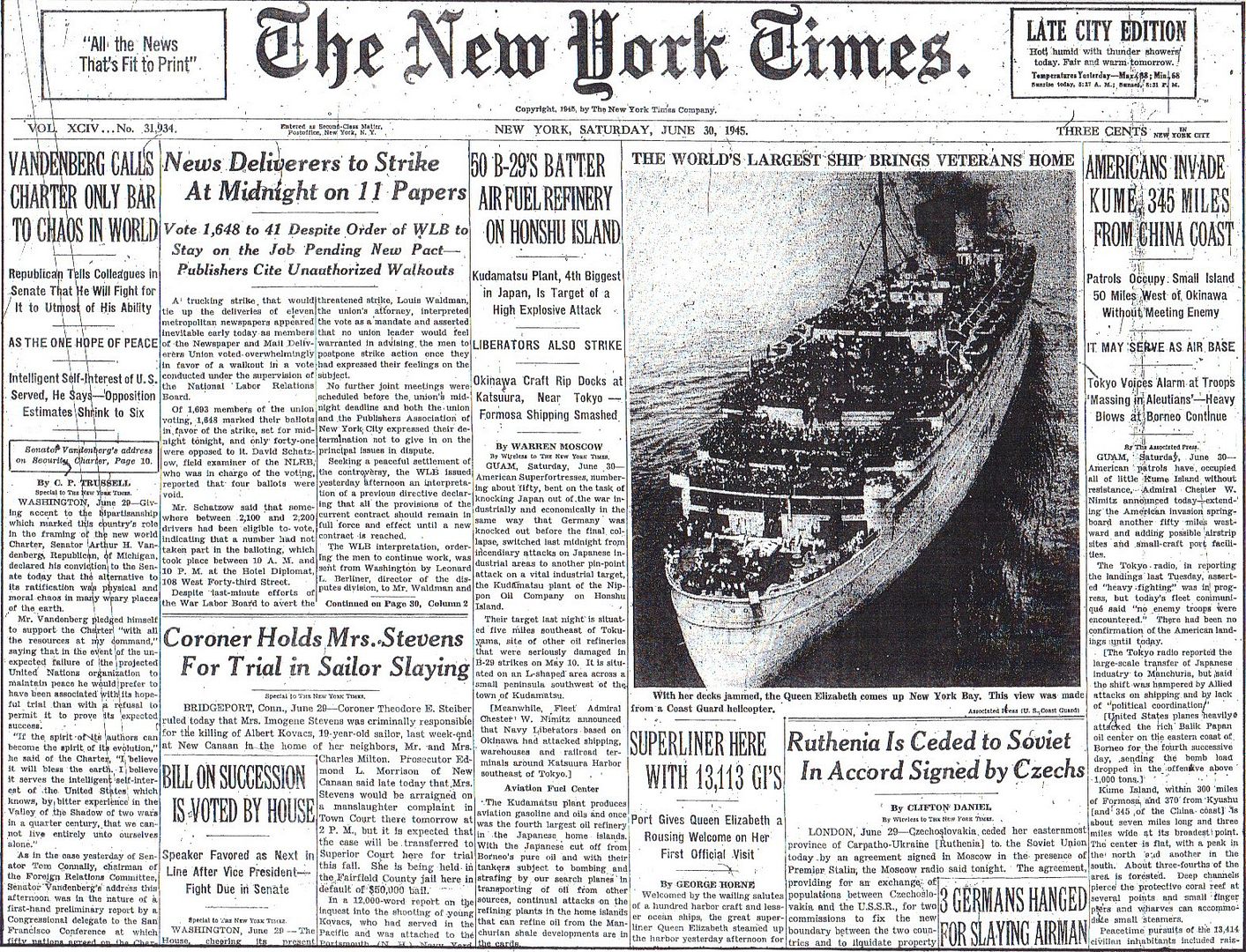
Posted on 06/30/2015 4:38:17 AM PDT by Homer_J_Simpson


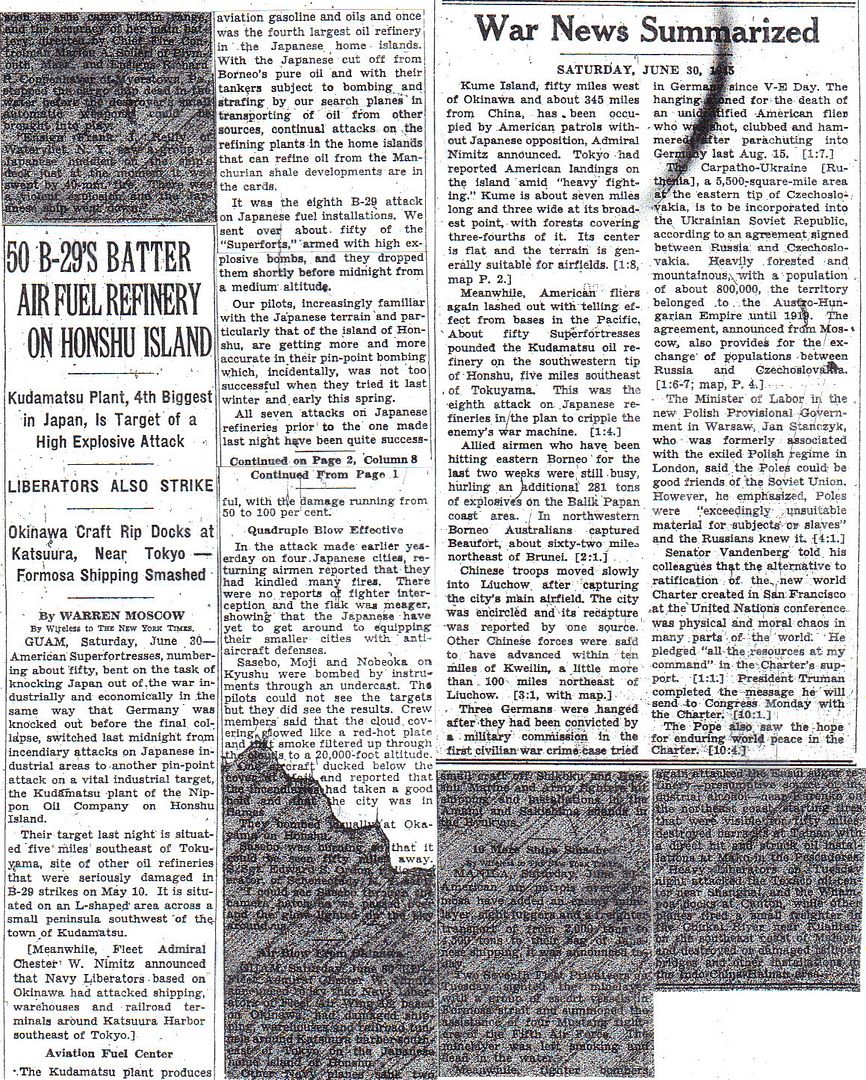
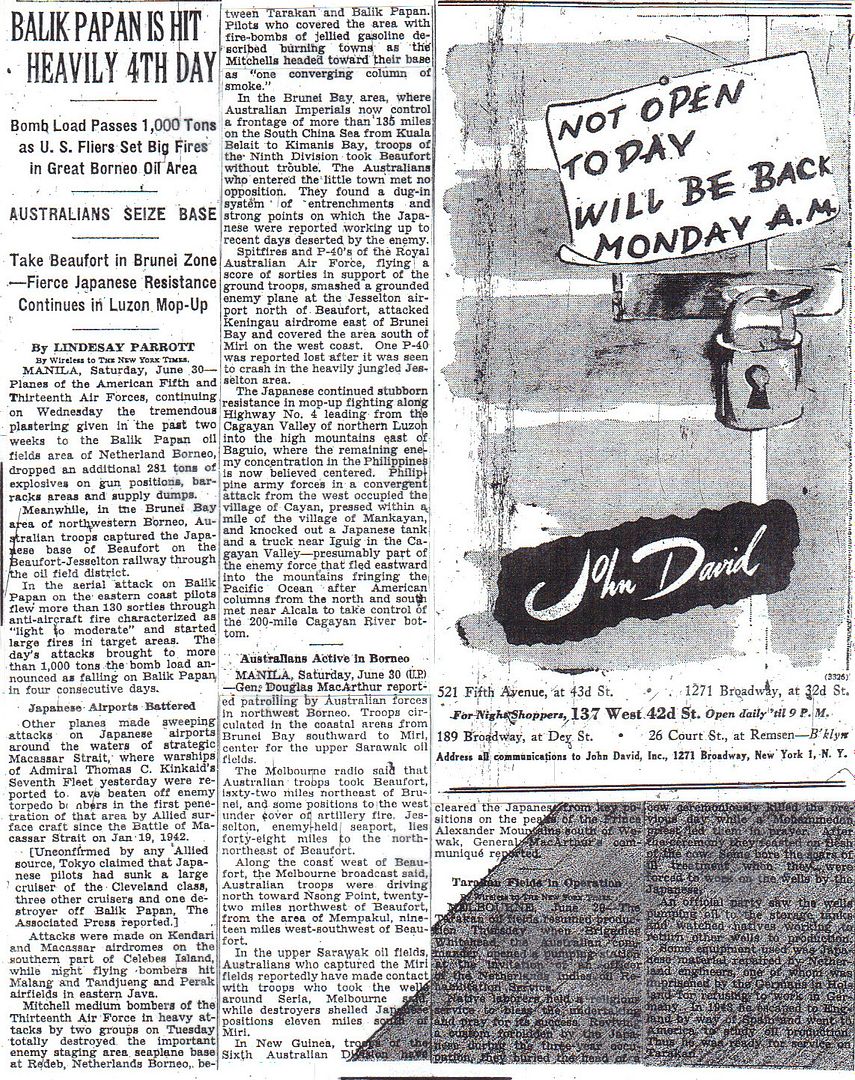
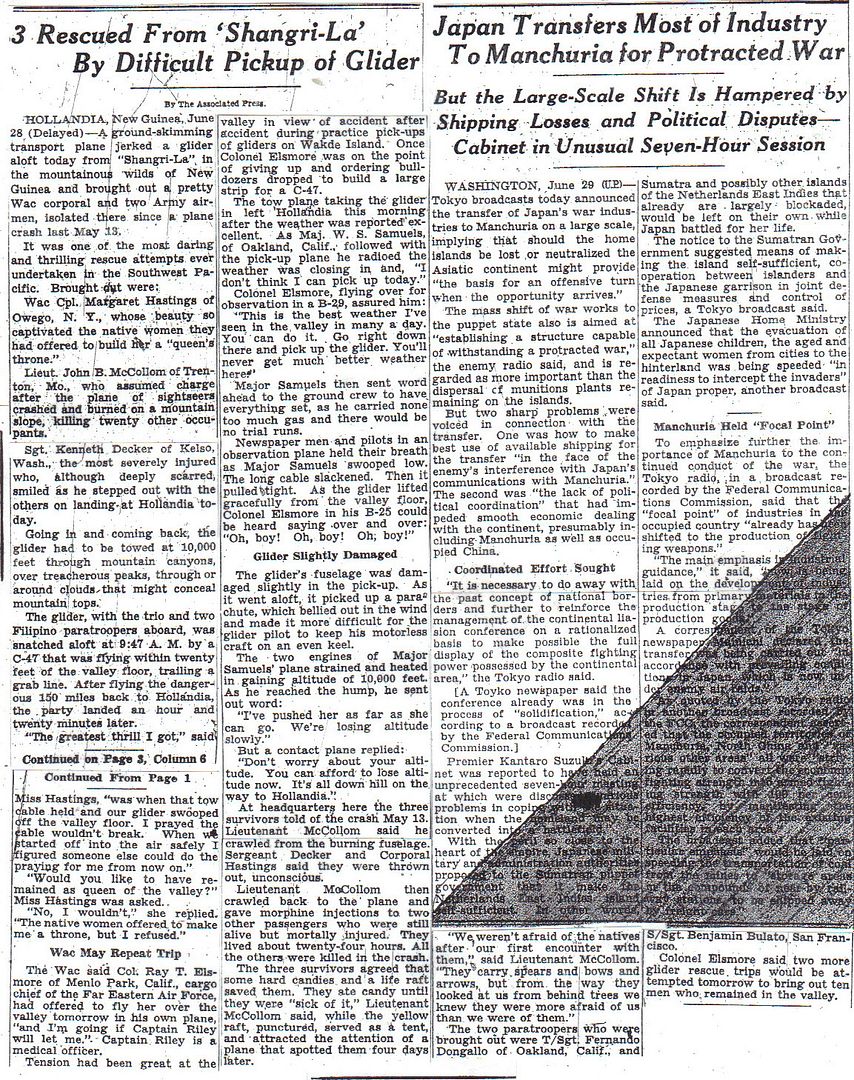
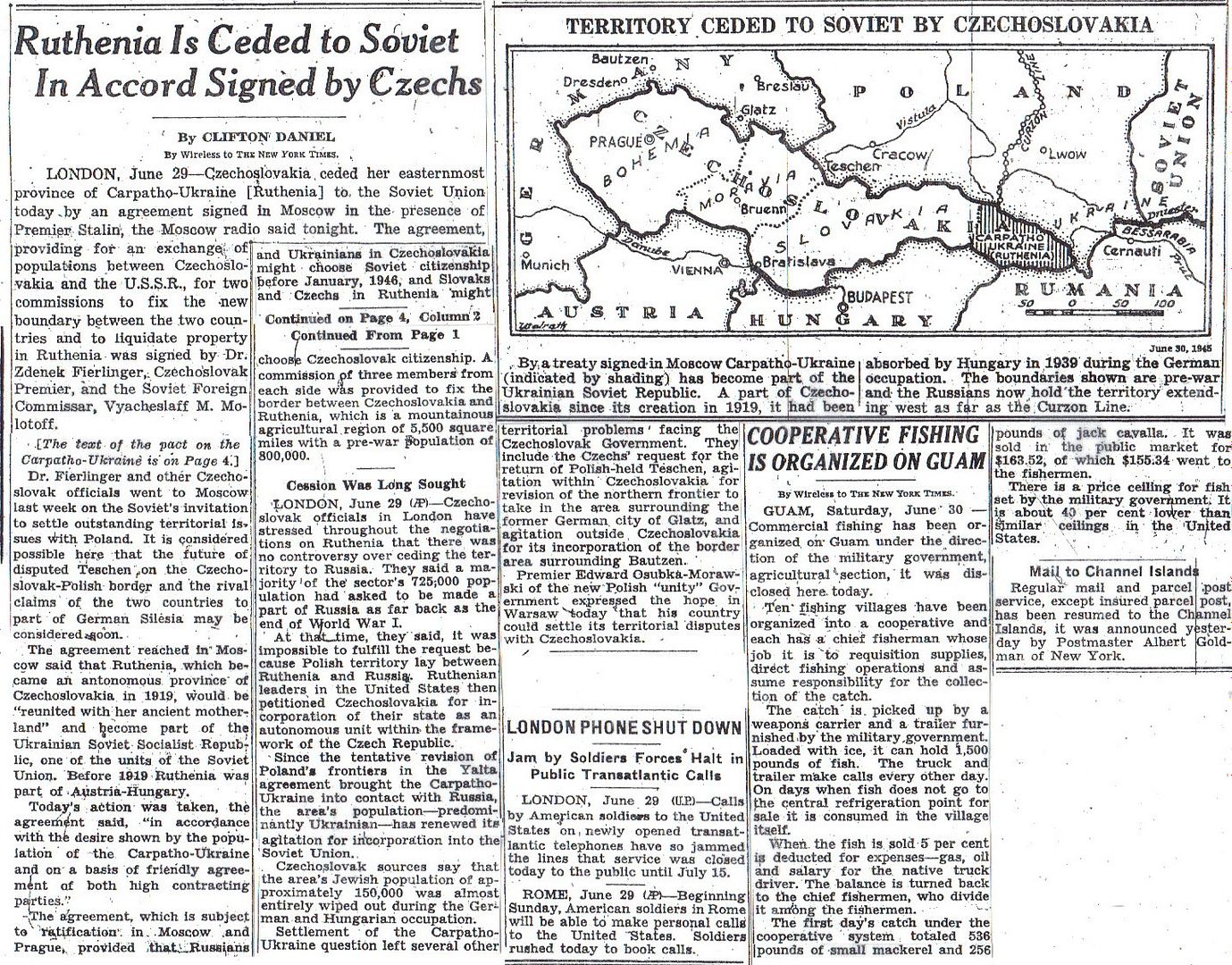
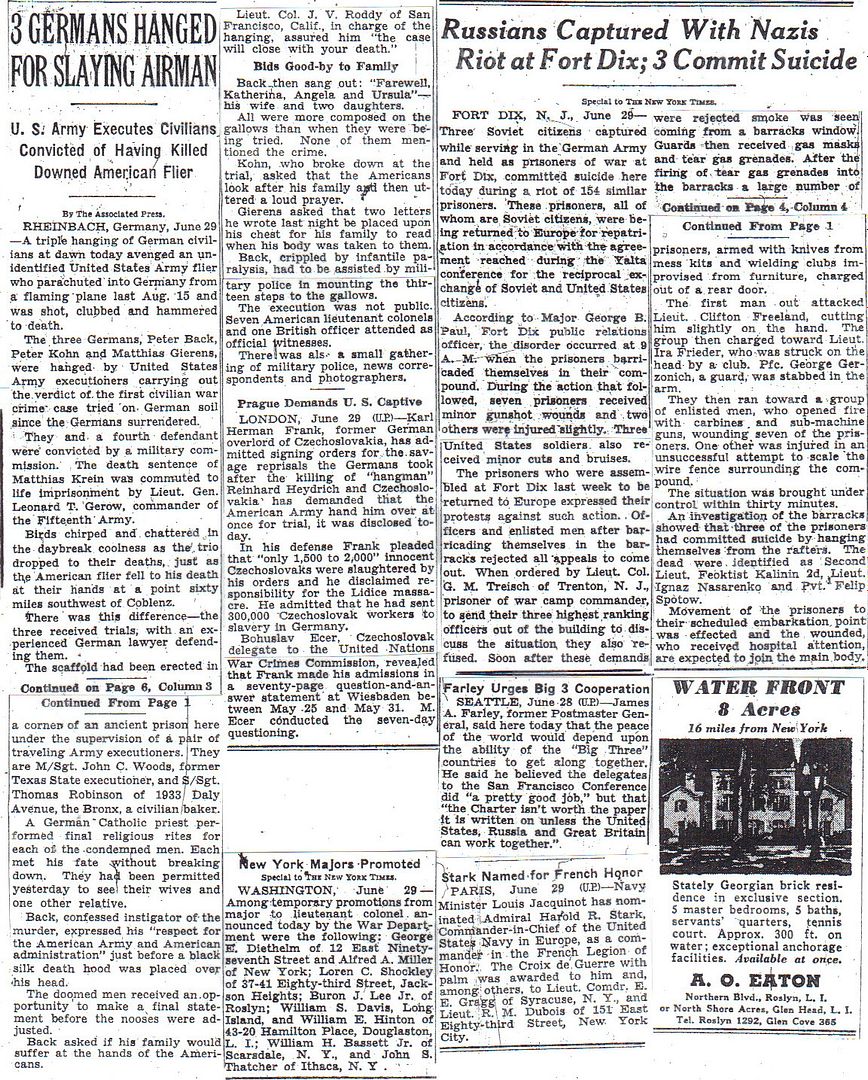
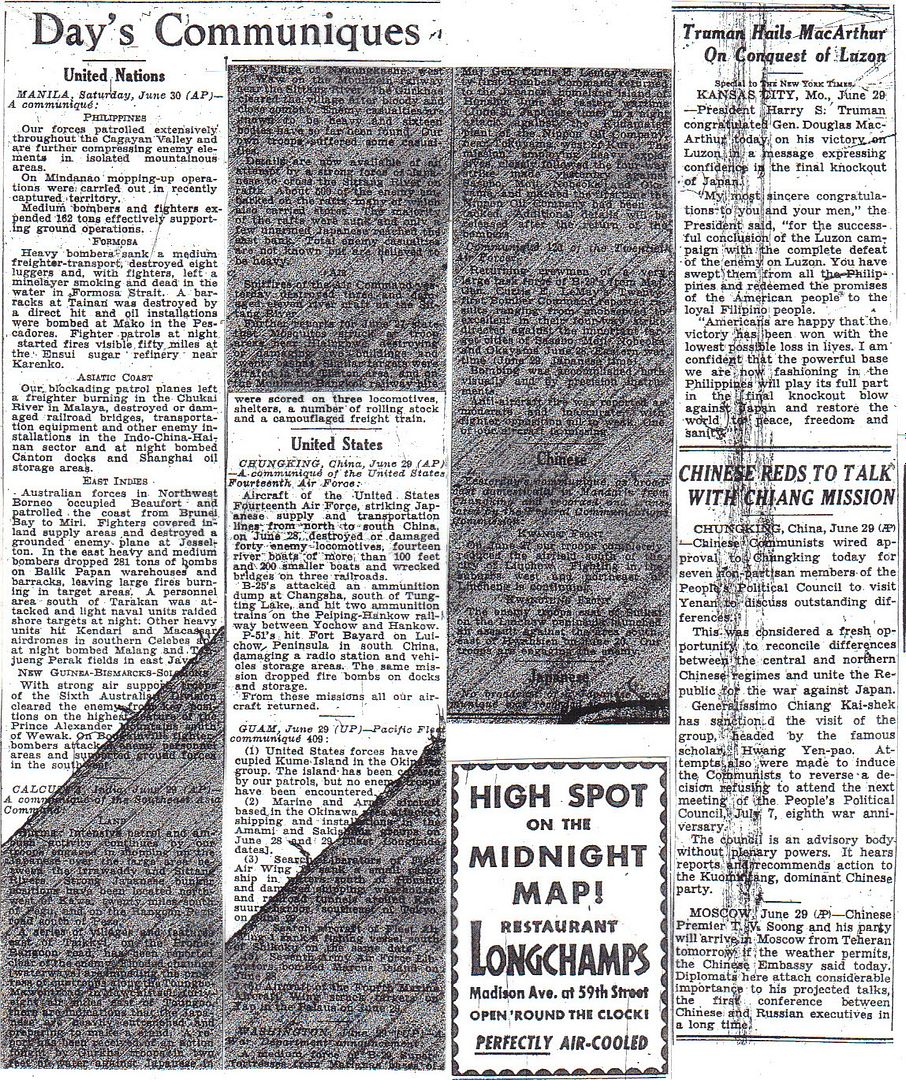
#1 – “Sentimental Journey” – Les Brown, with Doris Day
#2 - “Bell Bottom Trousers” - Tony Pastor, with Ruth McCullough
#3 – “There! I’ve Said It Again” – Vaughn Monroe
#4 - “Sentimental Journey” - Hal McIntyre
#5 – “You Belong to My Heart” – Bing Crosby, with Xavier Cugat Orchestra
#6 - “Bell Bottom Trousers” - Guy Lombardo, with Jimmy Brown
#7 – “Sentimental Journey” – Merry Macs
#8 - “Bell Bottom Trousers” - Kay Kyser, with Ferdy Slim Quartet
#9 – “Caldonia” – Louis Jordan
#10 - “Gotta Be This Or That” - Benny Goodman
Americans Invade Kume, 345 Miles from China Coast – 2-3
50 B-29’s Batter Air Fuel Refinery on Honshu Island (Moscow) – 3
War News Summarized – 3
Balik Papan is Hit Heavily 4th Day (Parrott) – 4
Rescued from ‘Shangri-La’ by Difficult Pickup of Glider – 5
Japan Transfers Most of Industry to Manchuria for Protracted War – 5
Ruthenia is Ceded to Soviet in Accord Signed by Czechs (Daniel) – 6
3 Germans Hanged for Slaying Airman – 7
Russians Captured With Nazis Riot at Fort Dix; 3 Commit Suicide – 7
Day’s Communiques – 8
http://www.etherit.co.uk/month/5/30.htm
June 30th, 1945 (SATURDAY)
UNITED KINGDOM: Submarine HMS ASTUTE is commissioned.
JAPAN: PB4Y-2 Privateers of Patrol Bombing Squadron One Hundred Eighteen (VPB-118) based at Yonton, Okinawa, continue sewing aerial mines off the coast of Korea.
CHINA: Chungchin falls to Chinese forces, which advance into Indochina.
BORNEO: US forces bombard Balikpapan.
NETHERLANDS EAST INDIES: Six RAAF Liberators on No. 25 Squadron hit Tanjong Perak airfield near Surabaya. (Michael AlexanderMitchell)
MARIANAS ISLANDS: the 509th Composite Group, scheduled to deliver the atomic bomb attacks on Japan, begins combat flight training from Tinian Island. For most crews, this involves five or six practice missions such as a navigation training flight to Iwo Jima Island, bombing Rota Island in the Mariana Islands during the return flight, two or more short bombing missions against Rota or Guguan Island, Mariana Islands, one long bombing mission against Truk Atoll, and one against Marcus Island. All of these missions are in flights of two to nine B-29s.
CANADA: Tug HMCS Atwood assigned to Sydney for ASW towing vessel duties
Auxiliary HMCS Lakewood assigned to Prince Rupert for ASW towing vessel duties.
U.S.A.: Washington: Truman appoints James F. Byrnes to succeed Edward Stettinius as secretary of state.
On this date, the USN has 67,952 ships and craft and 4,031,097 personnel consisting of 3,383,196 sailors; 476,709 Marines; and 171,192 Coastguardsmen.
Destroyer USS POWER is launched.
“On this date, the USN has 67,952 ships and craft”
Mind boggling and never to be seen again.
An interesting coincidence: the island across Kasado Bay from the peninsula, called Kasado Island, has its own Mt. Suribachi. Since 'suribachi' 摺鉢 is the Japanese word for a mortar-and-pestle bowl, the name is probably as much a description of the mountain as anything, much like, well, the Grand Tetons.

;-)
Destroyer USS POWER is launched.
http://www.usspowerdd839.crcug.com/
First Lieutenant John V. Power, USMC
For conspicuous gallantry and intrepidity at the risk of his life above and beyond the call of duty as platoon leader, attached to the 4th Marine Division, during the landing and battle of Namur Island, Kwajalein Atoll, Marshall Islands, 1 February 1944. Severely wounded in the stomach while setting a demolition charge on a Japanese pillbox, 1st Lt. Power was steadfast in his determination to remain in action. Protecting his wound with his left hand and firing with his right, he courageously advanced as another hostile position was taken under attack, fiercely charging the opening made by the explosion and emptying his carbine into the pillbox. While attempting to reload and continue the attack, 1st Lt. Power was shot again in the stomach and head and collapsed in the doorway. His exceptional valor, fortitude and indomitable fighting spirit in the face of withering enemy fire were in keeping with the highest traditions of the U.S. Naval Service. He gallantly gave his life for his country.
...........................................
USS Power decommissioned in September 1977, and sold to the Republic of China (Taiwan) in October. ROCS Sheng- Yang (DDG-923) Sheng-Yang decommissioned 26 November 2005
Russians riot at Fort Dix
.........By 1943, their general, Andrei Vlasov, had raised a force of nearly 1 million Soviet-born soldiers in German uniforms.
But instead of heading for the Eastern Front, where they would have fought fiercely, Vlasov’s army was sent to man the coastal defenses of German-occupied France.
After the D-Day invasion of 1944, thousands of Soviet citizens were suddenly in American hands — an odd situation for the United States, which was an ally, if an uneasy ally, with the Soviet Union.
.........................
And from Moscow, Ambassador Averell Harriman was reporting that trainloads of Russian POWs returned every day from Europe — and every deserter was summarily shot.
..................................
The POWs’ final departure was kept top secret and never reported in any newspaper. Declassified documents show that they shipped out on Aug, 31, acting “docile,” and were turned over to Soviet authorities at Hof in Eastern Germany.
Queen Elizebeth
During March 1940 four of the world’s greatest liners, the Mauretania, Normandie, Queen Elizabeth and Queen Mary, were berthed alongside each other. The Queen Elizabeth remained berthed at New York until 13 November and then set sail for Singapore, via Cape Town. The refit was completed in graving dock at Singapore and defensive armament was fitted. Internally it was fitted out to carry troops as it had now been requisitioned by the Ministry of War Transport. On 11 February it sailed from Singapore to Sydney, arriving on 21 February. After the fitting out was completed here it made a trooping voyage to the Middle East and spent the next five months carrying troops from Sydney to Suez, and returning with German POW’s. After the US entered the war the Queen Elizabeth sailed to Esquimalt, in Canada, and carried troops to Sydney.
In 1942 the Admiralty drew up plans to convert the two Queens into aircraft carriers but these were later abandoned as it was considered that their troop carrying role was too important. In April 1942 the Queen Elizabeth relocated from Sydney to New York. Here the troop accommodation was altered to make its capacity 10,000. In June 1942 it began to make voyages from New York to Gourock and then to Suez, via Cape Town. In August it began a shuttle service between New York and Gourock. Despite the ever present threat of U-boats the ship continued its service unscathed, although the German press stated that a U-boat had hit the vessel with a torpedo on 11 November.
By the end of the war in Europe the Queens had brought over a million troops to the war zone. The ship’s next duty was to repatriate these troops and redeploy troops for the war against Japan. The repatriation of American troops continued until October 1945 when the Queen Elizabeth was released from US service and allocated to the repatriation of Canadian troops. On 6 March 1946 it arrived back in Southampton and was released from Government service as the need for troop movements had diminished. During the war it had carried over 750,000 troops and travelled 500,000 miles.
........................
The Queen Elizabeth made its final Atlantic crossing on 5 November 1968. It had now already been sold to a group of Philadelphia businessmen for £3.25 million. After this it sailed to Port Evergaldes and opened to the public in February 1969. By the end of the year it had been closed down by the local authorities as a fire hazard and was losing money. By late 1970 the ship had been auctioned and bought by C.Y.Tung shipping group in Hong Kong and was intended to become a floating university. It was soon renamed Seawise University and sailed for for Hong Kong on 10 February 1971. Due to machinery problems it did not arrive until July and anchored off Tsing Yi Island near Kowloon.
Work soon began on a £5 million refit to convert the ship into a university and by January 1972 work was almost complete. Security on board, however, was lax and on 9 January several fires were discovered in various parts of the ship. The fires spread and the ship burned throughout the night. Soon the ship rolled on to its side and then the hulk continued to burn and smoulder for over a week. Fortunately there was only one casualty but it was clear that the ship was now only fit for scrap. An enquiry in July 1972 confirmed that it had been the work of an arsonist but the culprit was never found. In December 1973 it was decided to scrap the hulk. The ship’s final protest came on 5 November 1975 when it rolled over and disgorged several tons of oil which polluted the surrounding waters and beaches.
Your wonderful photo, with the Grand Tetons reflected in the pond, strongly reminded me of a view I saw 45 years ago and have always remembered vividly since, so striking an impression it had upon me. We were fishing on Jackson Lake (iirc) from which those peaks seem to erupt, and the reflection of them on the still lake as they towered above it has been exceeded for supernatural beauty, in my life, only by my wife and by the Grand Canyon.
Kume Island
http://www.ibiblio.org/hyperwar/USCG/VI-Pacific/USCG-VI-27.html
KUME—RYUKYU ISLANDS
AIR RAID WARNING FACILITY SITES
Landings were made by a reconnaissance battalion of U.S. troops on Kume Island, 50 miles west of Okinawa on the morning of 26 June, 1945, The landings were without opposition, all but 30 natives having fled to the hills. These reported that there were 40-50 Japanese military personnel on the island, possibly as service personnel for the airstrip, which was a rough, sandy runway used for emergency landings. Kume afforded an additional air raid warning facility site for U.S. positions and forces at Okinawa, Iheya Island, about 17 miles northwest of the northern tip of Okinawa’s west coast, had been occupied without opposition by the Second Marines on 4 June and Aguni Island, 30 miles off Okinawa’s west coast, was invaded and secured on the 9th, also without resistance. In addition to providing bases for radar installations, all three islands had possible airfield sites.
One story here: http://meibukanhombu.com/the-hombu/history/the-mastery-and-mystery-of-meitoku-dai-sensei/kume-jima-massacre/
Japan and Manchuria
According to this, Manchuria was a source of gold: http://globaljournals.org/GJHSS_Volume10/10-Japan-Looted-Gold-Resources-in-Northeast-China-during-World-War-II.pdf
Japan and Manchuria
According to this, Manchuria was a source of gold: http://globaljournals.org/GJHSS_Volume10/10-Japan-Looted-Gold-Resources-in-Northeast-China-during-World-War-II.pdf

The wreck of the Queen Elizabeth figures in the movie The Man with the Golden Gun as a secret MI6 HQ in Hong Kong.
Disclaimer: Opinions posted on Free Republic are those of the individual posters and do not necessarily represent the opinion of Free Republic or its management. All materials posted herein are protected by copyright law and the exemption for fair use of copyrighted works.